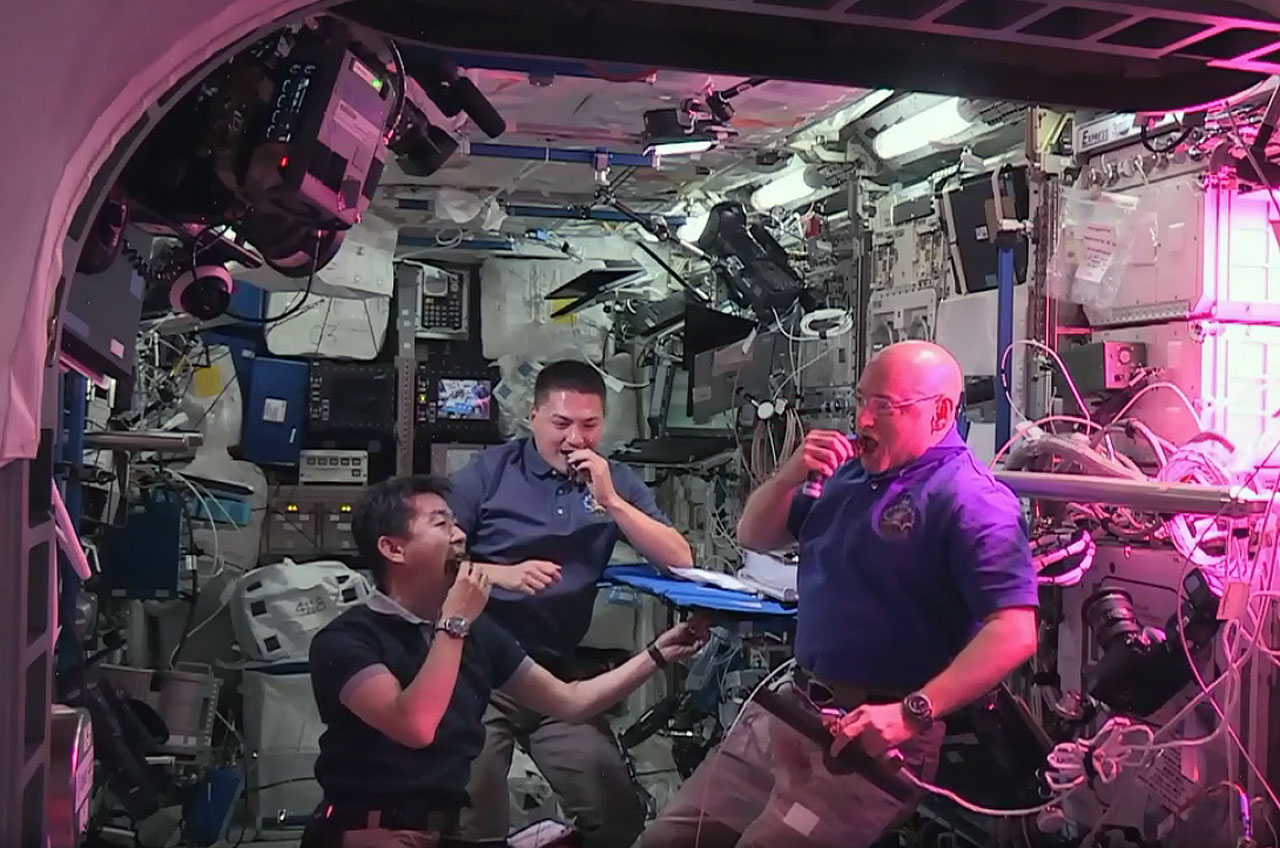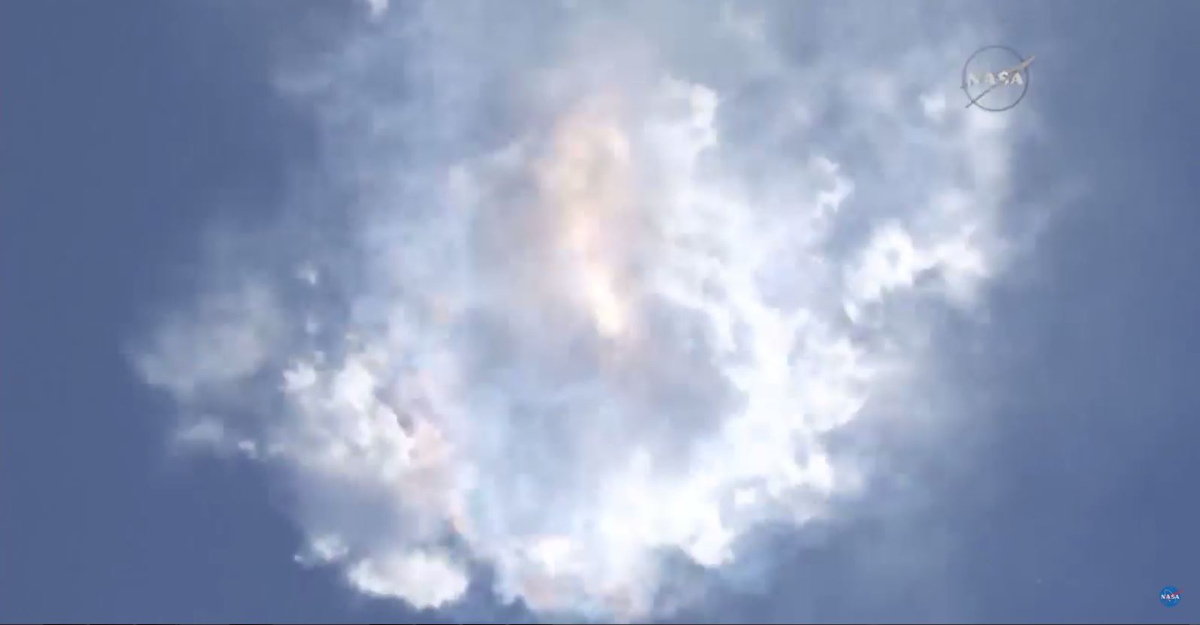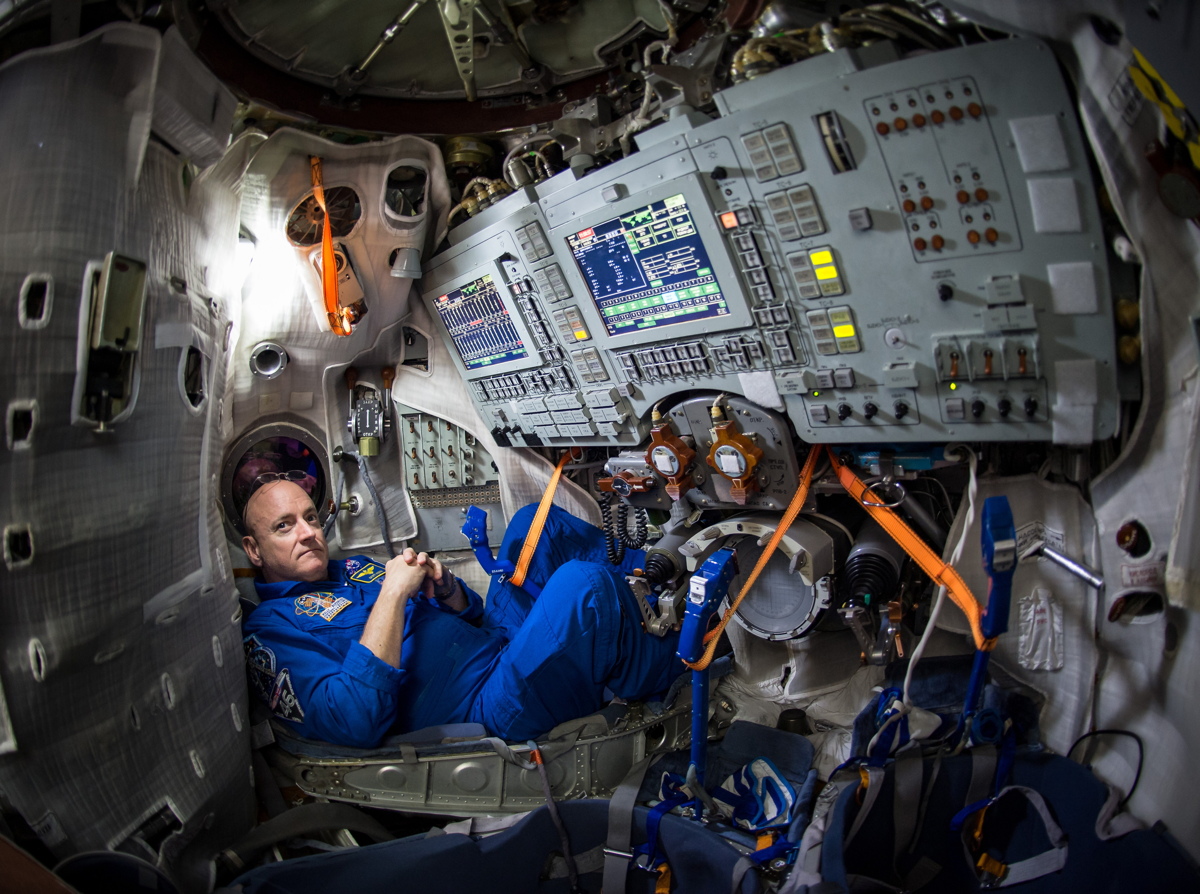A Year in Space: 7 Mission Milestones for NASA Astronaut Scott Kelly

NASA astronaut Scott Kelly is scheduled to return to Earth tomorrow (March 1) after spending 340 days aboard the International Space Station. He is the first American to live in space for such a long period of time.
Here are seven milestones of Scott Kelly's monumental year in space.
Blast off!
When Scott Kelly lifted off aboard a Russian Soyuz space capsule on March 27, 2015, bound for the International Space Station, he began a journey to do something that no American had done before: spend nearly a year in orbit.
Along with Russian crewmate Mikhail "Misha" Kornienko, who also stayed on board for just shy of a year, Kelly's role is to teach doctors back on Earth how the human body changes over long periods spent in weightlessness. Most data on the effects of spaceflight on humans come from six-month missions; one-year missions have not taken place in space since cosmonauts lived on the Mir space station in the 1990s.
"Misha and I are only one data point in this goal to have people live and work in space for longer periods, with the hopes of someday going perhaps to Mars," Kelly said during a preflight news conference in Russia. "But you've got to start somewhere, and I think this is a great start. And I'm proud to be a part of it."
Veggies in space
In August 2015, Kelly was on hand when, for the first time, astronauts actually ate a vegetable — lettuce — grown in space. Kelly, NASA astronaut Kjell Lindgren and Japanese astronaut Kimiya Yui were shown on video munching the "Outredgeous" red romaine lettuce. "Tastes good," Kelly remarked.
The next iteration of Veggie, using zinnias, became threatened by moldclose to the Christmas holidays. Kelly agreed to take over management of the experiment and ended up saving most of the plants, allowing flowers to bloom by January. "Yes, there are other life forms in space!" Kelly tweeted Jan. 16.
Breaking space news, the latest updates on rocket launches, skywatching events and more!
Spacewalks
The ISS is currently undergoing renovations to prepare the station to receive commercial spacecraft designed to carry humans. The renovations include changing the docking ports to accommodate SpaceX's Dragon and Boeing's CST-100. Kelly's role in spacewalking, however, was to make sure the station is in tip-top shape.
Kelly tackled three spacewalks, which occurred in October, November and December. The first spacewalk (with Kjell Lindgren) focused on long-term maintenance of the station, while the second saw Kelly and Lindgren fixing up the station's plumbing. In December, Kelly and NASA astronaut Tim Kopra manually freed the Mobile Transporter — a railcar that moves the station's robotic arm — after a stuck brake handle stopped the transporter from moving.
Kelly appeared relaxed and occasionally joked during the procedures. "Somebody did a really good job on this wire tie here — like for all eternity," he quipped during his November spacewalkwhile struggling to undo a wire tire.
Progress 59 re-supply failure
To stay provisioned in space, the ISS needs regular re-supplies from cargo spacecraft. Occasional failures do happen, however, such as what occurred with the Progress 59 craft that lifted off on April 28, 2015.
Russian controllers were unable to gain control of the craft, which was spinning far out of reach of its destination. It fell back to Earth in May, 2015, due to a failure in the third stage of its rocket.
Controllers were somewhat unsure of where it would land, but the incident was taken as a lesson learned. Future spacecraft may be equipped with retro-reflectors to make it easier to track them and predict where they will re-enter the atmosphere, according to officials from the European Space Agency.
SpaceX rocket explosion
On June 28, 2015, a SpaceX rocket carrying supplies to the International Space Station exploded only a couple of minutes after launch. The 4,000 lbs. (1,814 kilograms) of lost cargo included food, supplies and science experiments for the station, such as a high-resolution camera for meteor observations. The cause of the explosion was later traced to a faulty strut.
The failure came after a catastrophic explosion of an Orbital Antares rocket in October 2014 (with the Cygnus cargo craft on top) and the Progress failure of April. NASA, however, said the station had enough slack in its supplies to stay provisioned for a while.
"We're good to the October time frame if no other vehicles show up," NASA ISS program manager Mike Suffredini said during a pre-launch press conference on June 26, 2015. Luckily for the astronauts, cargo flights made it successfully to the station before then, and no other failures have occurred since that time.
A birthday in orbit
Kelly celebrated an extra-special birthday in space on Feb. 21. The milestone is notable not only because he was in space at the time, but also because he shares the birthday with his twin brother, Mark.
Mark and Scott have both been in space before, and NASA saw a unique opportunity to see how the genes of a person change after extended stays in space. For the so-called "Twins Study," while Scott is performing experiments on himself up above, Mark remains on the ground doing identical procedures.
"Happy birthday to Scott Kelly, who is working 250 [miles/402 kilometers] above Earth, and Mark Kelly, who is helping with the Twins Study from our home planet," NASA wrote on Tumblr on the twins' birthday.
Back on Earth
After a year doing science and spacewalks — as well as tending flowers and admiring the view — Kelly will arrive back on Earth on March 1. The extreme amount of time he spent in isolation had some people wondering if he would mind being there for so long, but Kelly emphasized repeatedly that it was a matter of focusing on one day at a time.
"On a six-month flight, your mindset is you're going to go up there, and you're going to be up there for a period of time, and you're going to come home," Kelly said in January 2015.
"When it's a whole year, I don't have that same perspective. It's almost like I feel like I'm just moving there and I'm not coming back. Or it's going to be so long that when I come back, it's almost like I never lived here maybe."
Follow Elizabeth Howell @howellspace. Follow us @Spacedotcom, Facebook and Google+. Original article on Space.com.

Elizabeth Howell (she/her), Ph.D., was a staff writer in the spaceflight channel between 2022 and 2024 specializing in Canadian space news. She was contributing writer for Space.com for 10 years from 2012 to 2024. Elizabeth's reporting includes multiple exclusives with the White House, leading world coverage about a lost-and-found space tomato on the International Space Station, witnessing five human spaceflight launches on two continents, flying parabolic, working inside a spacesuit, and participating in a simulated Mars mission. Her latest book, "Why Am I Taller?" (ECW Press, 2022) is co-written with astronaut Dave Williams.





